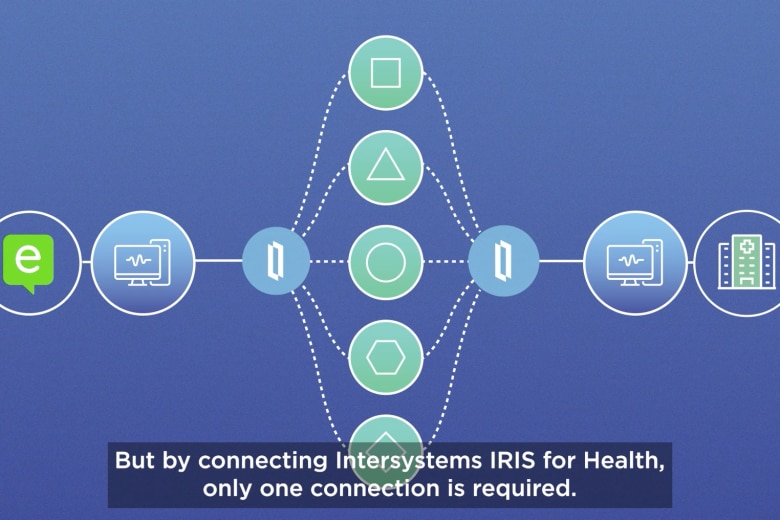The Podiatry Service has made significant improvements in overall care quality and access since implementing a unified healthcare information system
Podiatrists in one of the UK’s largest health organisations have improved their service model and adopted more effective ways of delivering care using InterSystems TrakCare® unified healthcare information system, resulting in a huge reduction in wait times and better patient outcomes.
In 2012, 11 different podiatry services were integrated into a single system service. The 10 community and primary care-based services and one acute service therefore needed to consolidate their different processes, systems and cultures, to ensure they continued to provide an efficient service. With the service now covering 37,000 patients and delivering over 160,000 treatments and interventions across 40 bases every year, the initial challenge for the integrated podiatry clinic was going paper-free.
The service made the critical decision to adopt TrakCare, accelerating progress for the organisation across the entire system. All new patient referrals are triaged directly on to TrakCare through the podiatry services’ referral management system centre. With greater visibility of data around referrals, demand, capacity and caseloads, the service has been able to significantly improve workforce and service planning, improving wait times by over 400%.
Patient did not attend (DNA) rates have also improved by 28%, as people can access appointments much closer to their initial referral call and receive a text reminder for their upcoming appointment. The service’s consolidated DNA rates are now around 46% lower than other podiatry services across Scotland.
“Prior to implementing TrakCare in Podiatry, the service had never been able to accurately measure performance, in terms of how quickly and how frequently patients are seen, what their outcomes are, what the demand on the service is, and how much capacity people consume, on an individual and aggregate basis. The team had never been able to do the workforce planning around that, which they can now do with TrakCare,” explains Charles King, InterSystems lead in Scotland.
Armed with greater visibility and flexibility across the service, TrakCare is also enabling clinicians to free up capacity for patients suffering with diabetic and vascular foot wounds to be seen within 2 working days, which if they are, significantly reduces the likelihood of them deteriorating and needing an amputation. In fact, TrakCare has enabled the service to allocate the majority of its resource to patients with the highest level of need, with just over a quarter of patients (26%) who need to receive treatment within 0-4 weeks consuming more than half (53%) of capacity.
“With the old model of care, people were recalled, just in case something might go wrong because if they were discharged, they’d have to wait 30 weeks for another appointment,” says King. “Now, patients can be let go safe in the knowledge that if they need care urgently, they can be seen within 2 days and if they need a routine check-up, within 4 weeks.”
Historically, patients with foot wounds would be treated in hospital using one set of medical notes and also in the community with a separate set of medical notes. Now with TrakCare’s clinical note capability, all patient notes are stored electronically, in one central place, and are accessible to every care provider with the appropriate permissions, regardless of whether they work in hospital or community clinics.
“Greater data sharing and interoperability are pivotal to transferring care to the community and alleviating pressures across the primary and secondary care interface. By connecting the various touch points across a patient’s care and enabling clinicians to communicate through data in TrakCare, this Podiatry Service has established an exemplary ecosystem of care that delivers for its patients” continues King.
The ability to subsequently plan and allocate advanced clinicians’ resources and services more effectively has also enabled the podiatry service to develop capacity across community hubs for patients presenting with vascular foot wounds and critical limb ischaemia (decrease in blood flow to the limb leading to severe pain, skin ulcers, sores and the risk of potential limb loss)1 Community care professionals can now transfer pictures using the Secure Clinical Image Transfer (SCIT) app, thereby connecting with a hospital-based vascular specialist in real time. Urgent referrals to the vascular team can be made immediately through TrakCare so patients can be admitted the same day, eliminating the need to schedule a further primary care visit.
King explains: “This is a real advantage for patients as they don’t have to trek all the way to the hospital when they have a foot wound. The team developed community hubs, supported by TrakCare, to see these people quickly, escalate them immediately and de-escalate them just as quickly. The ability to be seen with full access to all patients’ acute information, but in a local community health centre, is massively enabling for those with diabetes or vascular problems.”
What’s more, throughout the COVID-19 pandemic, the service has used TrakCare to taxonomize historic activity data into treatment blocks to help identify when each individual patient requires to be re-introduced back into the service. With greater visibility and access to data around how many patients require to be seen in each 4-week treatment interval, and the number of times review patients were seen historically, the podiatry service can better understand capacity and demand and ultimately how to organise their services.
“In spite of a significant increase in the number of new referrals – around 30% over recent years – the total number of active patients retained by the service has reduced by around 21.4% over that period, indicating that patients are being triaged appropriately and reviewed only when required,” says King.
References:
1. Santili JD, et al. Am Fam Physician. 1999 Apr 1;59(7):1899-1908.



































